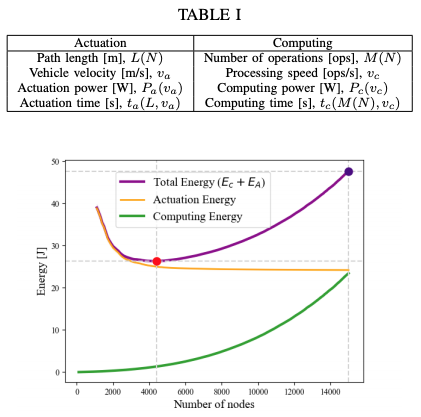
Soumya Sudhakar, Sertac Karaman, Vivienne Sze
Abstract:
We study a novel class of motion planning problems, inspired by emerging low-energy robotic vehicles, such as insect-size flyers, chip-size satellites, and high-endurance autonomous blimps, for which the energy consumed by computing hardware during planning a path can be as large as the energy consumed by actuation hardware during the execution of the same path. We propose a new algorithm, called Compute Energy Included Motion Planning (CEIMP). CEIMP operates similarly to any other anytime planning algorithm, except it stops when it estimates further computing will require more computing energy than potential savings in actuation energy. We show that CEIMP has the same asymptotic computational complexity as existing sampling-based motion planning algorithms, such as PRM*. We also show that CEIMP outperforms the average baseline of using maximum computing resources in realistic computational experiments involving 10 floor plans from MIT buildings. In one representative experiment, CEIMP outperforms the average baseline 90.6% of the time when energy to compute one more second is equal to the energy to move one more meter, and 99.7% of the time when energy to compute one more second is equal to or greater than the energy to move 3 more meters.
